Useful for molecular tagging of individuals to molecular dissection of complex traits
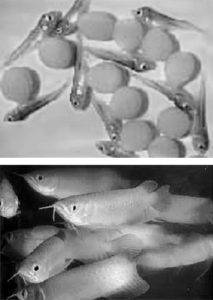
permission from the book The Millenium Dragon, by W. Goh and J. Chua.
During the last two decades, genetic markers have been studied extensively in domesticated cattle, pigs and chickens, and economically important crops such as rice and maize. Some genetic markers associated with economically important traits have already been identified and used in breeding programs, leading to substantial improvements in productivity and disease resistance.
Although the potential usefulness of such molecular markers for aquaculture was recognized long ago, their application to fish breeding has been neither widespread nor extensive. Most current research efforts on the front of developing molecular markers in fish is concentrated on microsatellites, as to date they are the most versatile markers available at a reasonable cost.
Microsatellites
Microsatellites are tandem repeats of short units (1-6 bp) of DNA [e.g., (CA)10 or (GATA)25] present in most organisms. Complete sequencing of the human, mouse, pufferfish, fruit fly, and Arabidopsis genomes showed that microsatellites are highly abundant (1 microsatellite per 2-10 kb of genomic sequence) and evenly distributed through the genome. In most fish species studied, the most abundant microsatellites are AC-type repeats followed by AG- and AAC-type repeats. Most microsatellites are located between the genes, but some are found within the genes themselves.
Advantages
- Microsatellites have the following advantages over other DNA markers:
- Much higher abundance in genomes than other kinds of markers. Minisatellites, for example, are 100-1,000 times less frequent.
- Even distribution in genome, in contrast to minisatellites, which tend to be clustered in the two ends of chromosomes.
- Locus specificity, in contrast to multilocus markers such as minisatellites, AFLPs, or RAPDs.
- Codominance. Heterozygotes can be distinguished from homozygotes, a major advantage over dominant markers, where this is not possible.
- Microsatellite genotyping is performed by polymerase chain reaction, allowing the use of tiny amounts of tissue, even highly degraded or “ancient” DNA.
- Highly polymorphic, with more than 2 alleles per locus within a population.
Useful for several purposes in aquaculture, from molecular tagging of individuals to molecular dissection of complex traits such as growth, temperature tolerance, and disease resistance.
Genotyping microsatellites
Microsatellites show length polymorphism due to the variable number of repeat units at a given locus among different samples. The detection of length polymorphism, called genotyping, is performed by PCR amplifying the repeats with oligonucleotide primers complimentary to the flanking border regions, followed by gel electrophoretic separation of the products. Due to the limited size difference (two base pairs) in some of the cases, PCR products can only be resolved on a high-resolution gel such as polyacrylamide or Metaphor agarose gel.
Following separation, the allele sizes are determined by comparing their position to that of a size standard. Due to the development of multiplex PCR techniques, automated workstations, and multichannel fluorescent sequencers, the number of samples that can be daily genotyped by a technician has increased to several thousand.
Development of microsatellite primers
The biggest bottleneck for the utilization of microsatellite markers is that the two flanking primers have to be identified and tested for each locus prior to their application. There are three possibilities to obtain microsatellite sequences for primer design: searching for DNA sequences containing microsatellites in public DNA databases, cross-species amplification, and sequencing clones from genomic DNA libraries.
Searching public DNA databases
The first method is the easiest, but for most fish species, there are only a few DNA sequences deposited in public databases, and most do not contain microsatellite sequences. Using this method, the authors have developed polymorphic microsatellites from common carp, Asian seabass, goldfish, and tilapia. This and other research in the authors’ laboratory is supported by internal research funding from Temasek Life Sciences Laboratory.
Cross-species amplification
Cross-species amplification is based on the fact that closely related species have many conserved sequences in their genomes. The approach uses microsatellite primers developed for one species to amplify DNA from another species. If the flanking sequences are conserved between the two species, the primers will amplify the repeat in the new species, as well.
The authors’ studies on a number of species – including catfish, common carp, silver crucian carp, goldfish, zebrafish, swordtail, and guppy – showed that most primers designed for one fish species amplified product(s) from the genome of a closely related species. However, for species distantly related at the genetic level, the success rate of cross-species amplification is generally low.
Sequencing clones from genomic DNA libraries
The traditional method for the isolation of microsatellite primers is to screen genomic DNA libraries. The protocols used for this purpose are generally quite similar. First, the genomic DNA is cut into pieces by restriction enzymes, and the resulting fragments are size-fractionated on agarose gel.
Fragments from the 250-1,000 bp size range are isolated from the gel and ligated into a plasmid vector, which is then transformed into cells to construct a partial genomic DNA library. The library is screened with a repeat-containing probe [e.g., (AC)10, (GC)10, or (GATA)8]. Clones hybridizing to probes are isolated and their nucleotide sequence is determined to find those with repeats. Usually less than 1-2 percent of the clones contain micro-satellite sequences, so this traditional method is labor-intensive, time-consuming, and costly.
In recent years, a number of methods have been developed to improve the efficiency of microsatellites isolation. In these methods, genomic DNA fragments containing microsatellites are first enriched, then cloned and sequenced.
The authors have also optimized a method for rapid and cost-effective isolation of microsatellites. The procedure is very simple and only takes a few days. With this method, they have isolated microsatellites from more than a dozen fish species, including common carp, Asian seabass, Asian arowana, silver crucian carp, guppy, and swordtail. The detailed protocol is available upon request.
Potential applications in aquaculture
Genetic mapping
One of the main uses of microsatellites has been in the construction of linkage maps for dissecting complex quantitative traits like growth, temperature tolerance, and disease resistance. The genetic maps can be used to trace the segregation of individual chromosomal regions within pedigrees and thus locate the quantitative trait loci (QTLs).
The effectiveness of this method has been confirmed in mammals. Although QTL analysis in fish started later than in domesticated animals, a number of QTLs for growth, temperature tolerance, and spawning time in salmon, rainbow trout, tilapia, and catfish have been identified between microsatellite markers.
Microsatellite alleles closely linked to QTLs can be used as markers for selecting individuals displaying superior trait performance. The ability to genetically distinguish better-performing fish from mixed offspring allows the identification of potential broodstock. Sex-linked DNA markers have been identified in rainbow trout, Nile tilapia, and channel catfish by using microsatellite-based linkage maps. However, for most food fish species, there are not enough microsatellites available for constructing linkage maps.
Broodstock management
Understanding population structure and genetic diversity is a prerequisite for making proper decisions in broodstock management. However, this is a difficult task without molecular markers. Microsatellites can serve as tools to evaluate inbreeding levels.
From there, we can move up to the genetic structure of subpopulations and populations using tools such as F statistics and genetic distances. They can be used to assess demographic history and search for evidence of population bottlenecks, examine effective population size, and check the magnitude and directionality of gene flow between populations.
A number of studies – including work by the authors – have demonstrated that microsatellites are able to detect the difference among genetically closely related populations. Some of the studies used only 4-10 microsatellites, which could have resulted in biased estimates. It is advisable to use a high number of microsatellites, if they are available, to study genetic diversity and population structure to avoid this mistake.
Parentage and kinship analyes
Parentage and kinship analyses are useful for the management of captive populations and understanding the mating behavior of the species in the wild. The high polymorphism of microsatellites makes them suitable markers for such a task. In captive populations, pedigree information is useful for farm managers, as it allows for reduction of inbreeding.
Microsatellites have been successfully used to elucidate the pedigree of mixed family groups reared in communal environments for several fish species. These studies clearly demonstrated that microsatellite-assisted selection programs are very useful for small farm operations, avoiding the need for separate tanks and physical tags.
Normally, half a dozen highly polymorphic microsatellites should allow for the assignment of each offspring to a parent pair, provided the parents’ genotype is sufficiently different and their number is not too high (3 x 3 or 4 x 4 design). Moreover, selection under a uniform environment raises the genetic improvement faster due to a reduction of environmental bias.
Other applications
Microsatellites might provide data suitable for phylogeographic studies that seek to explain the concordant biogeographic and genetic histories of the populations of large regions. They are also useful for fine-scale phylogenies up to the level of closely related species. However, this application is still questioned, due to the fact that the mutation processes of microsatellites are not fully understood and might vary from locus to locus.
Conclusion
A number of molecular marker systems have been used in breeding main food fish species. Each system may have advantages over others in certain aspects of aquaculture. However, the marker system with the greatest overall potential to apply to aquaculture is currently microsatellites. This system will remain the choice of DNA markers for aquaculture until more powerful tools like single nucleotide polymorphism become available.
(Editor’s Note: This article was originally published in the April 2003 print edition of the Global Aquaculture Advocate.)
Now that you've reached the end of the article ...
… please consider supporting GSA’s mission to advance responsible seafood practices through education, advocacy and third-party assurances. The Advocate aims to document the evolution of responsible seafood practices and share the expansive knowledge of our vast network of contributors.
By becoming a Global Seafood Alliance member, you’re ensuring that all of the pre-competitive work we do through member benefits, resources and events can continue. Individual membership costs just $50 a year.
Not a GSA member? Join us.
Authors
-
Gen Hua Yue, Ph.D.
Reproductive Genomics
Temasek Life Sciences Laboratory
National University of Singapore
1 Research Link
Singapore 117 60[103,115,46,103,114,111,46,108,108,116,64,97,117,104,110,101,103]
-
Laszlo Orban, Ph.D.
Reproductive Genomics
Temasek Life Sciences Laboratory
National University of Singapore
1 Research Link
Singapore 117 60
Tagged With
Related Posts
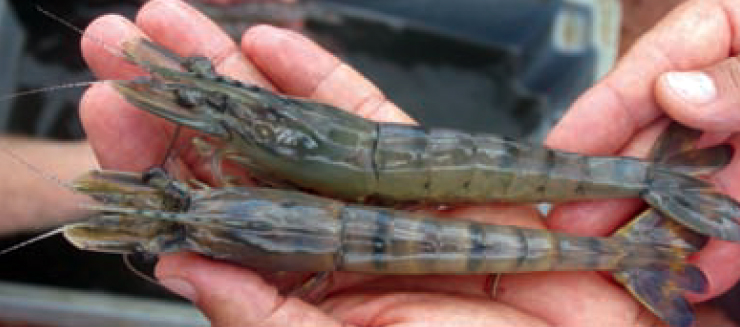
Health & Welfare
DNA fingerprinting: System for black tiger shrimp
Molecular markers can allow on-farm selection of high-performance families without the need to use costly alternatives such as separate rearing of families/ groups of families or tagging animals.
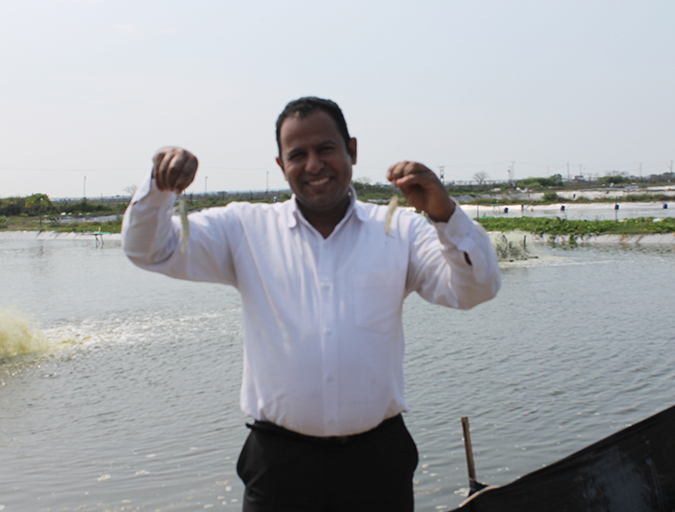
Health & Welfare
Selection for disease resistance in Indian white shrimp
A new breeding program for genetic improvement of Indian white shrimp (Fenneropenaeus indicus) in Egypt was established at a private shrimp farm at AL Dibah Triangle Zone (DTZ) to develop disease-resistant shrimp for the country’s aquaculture industry.
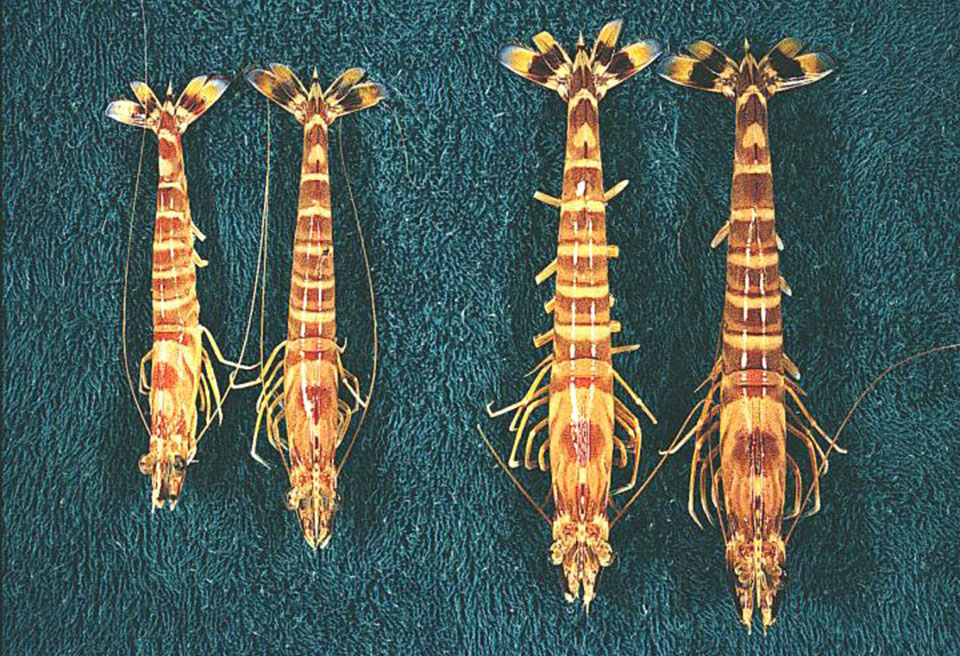
Health & Welfare
Linking mapping for Kuruma prawns
Domestication and genetic improvement of the Kuruma prawn (Penaeus japonicus) have been relatively slow due to availability of broodstock and postlarvae.
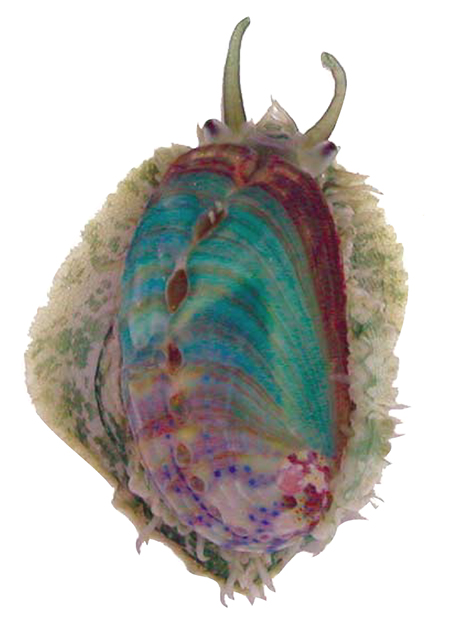
Intelligence
Tropical abalone DNA reveals untapped growth potential
Tropical abalone has aquaculture potential, since it is amenable to traditional selective breeding and modern DNA techniques to help reduce inbreeding.


